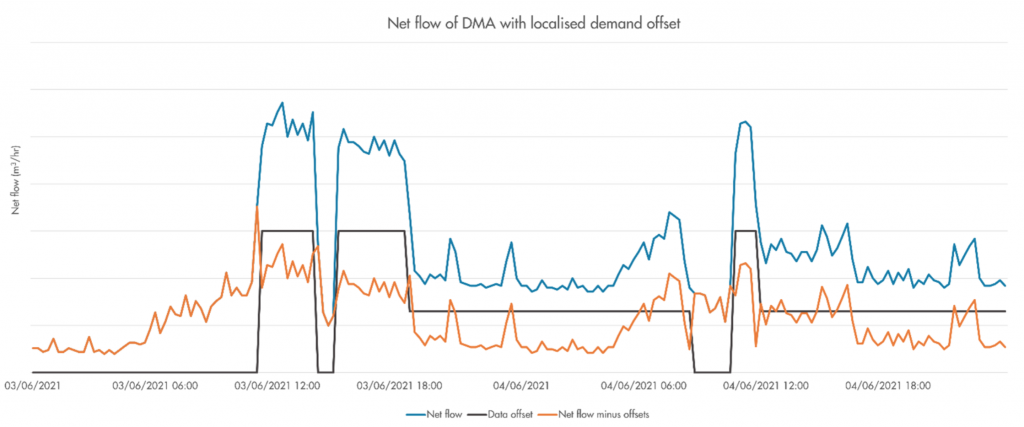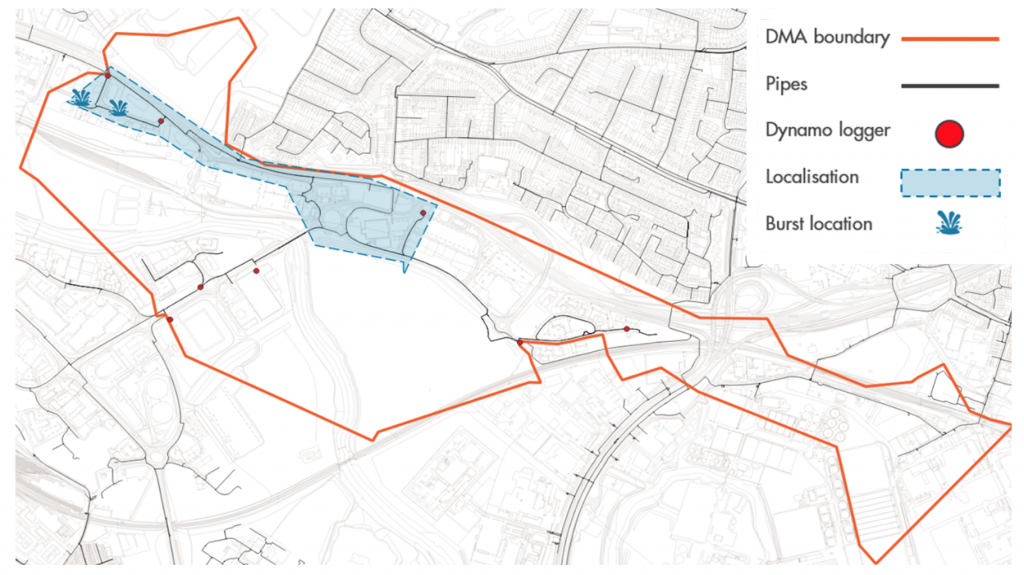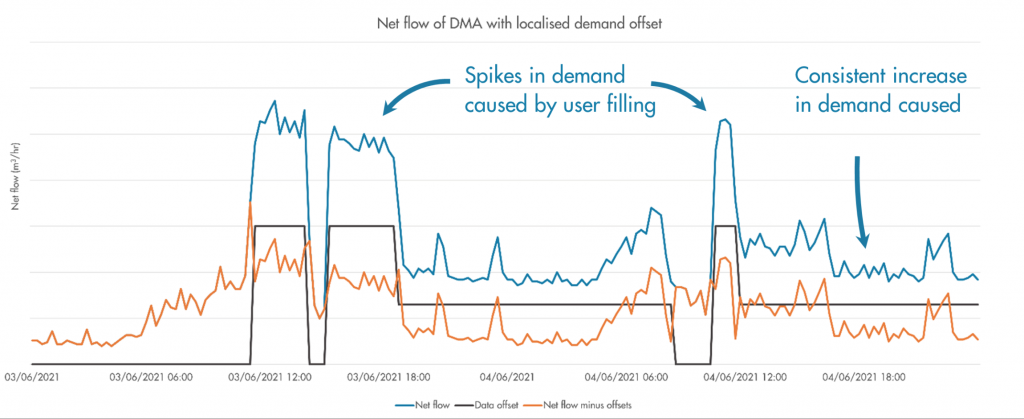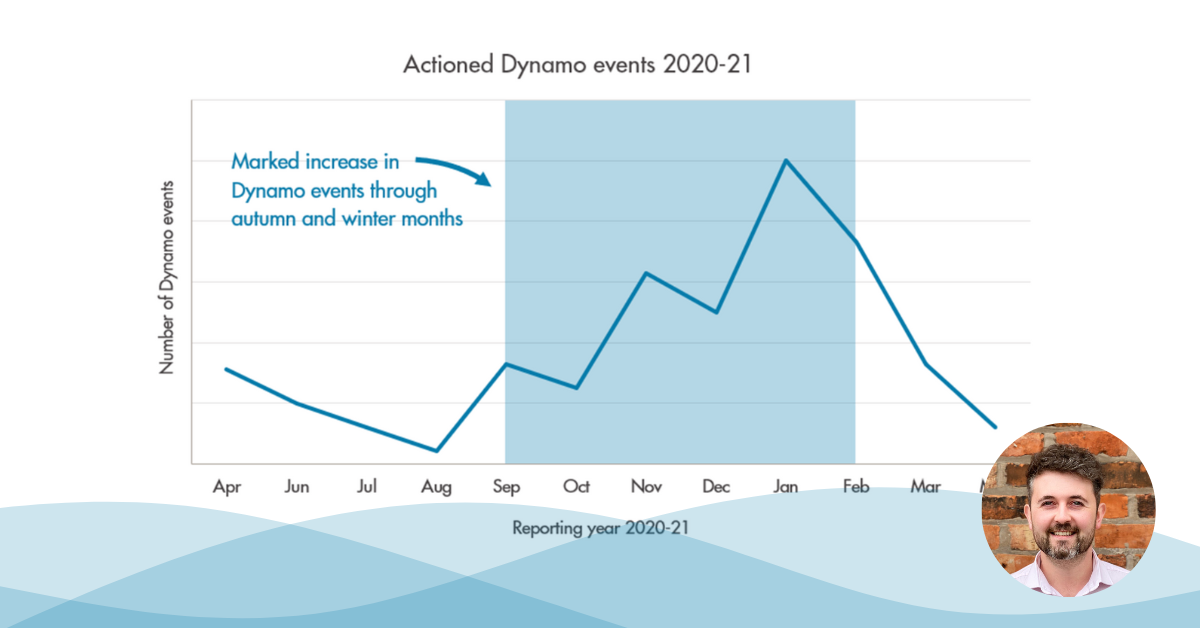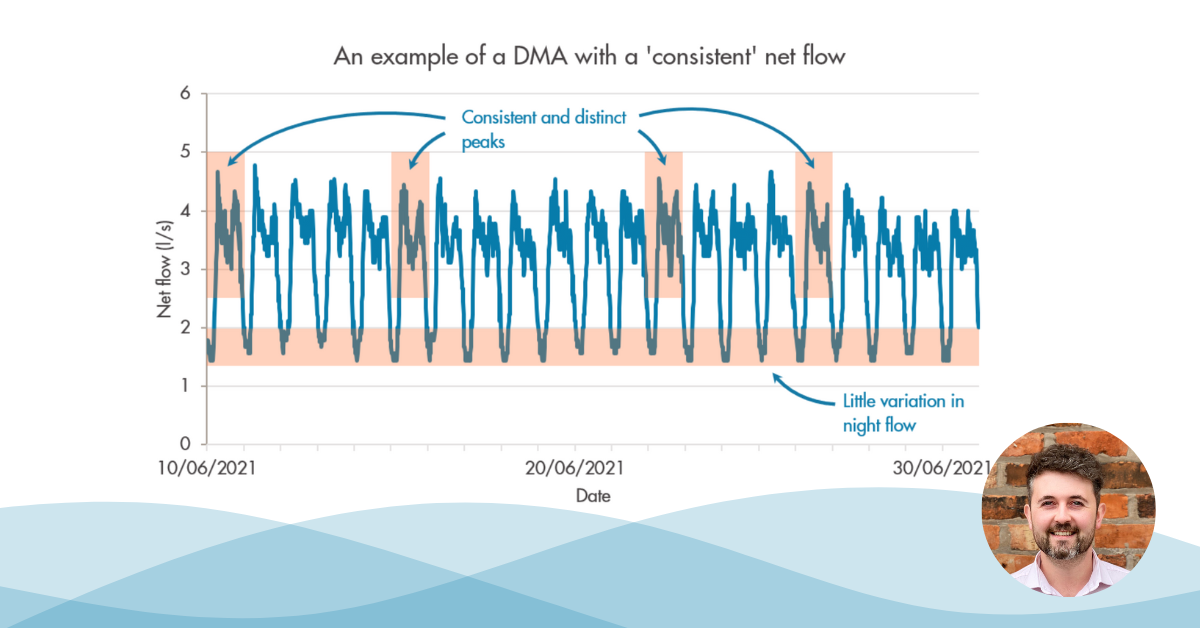Dynamo is an automated tool that is able to identify and localise events on our clients’ networks, including unidentified demand previously reported as leakage. Dynamo analyses the time series data that we receive from our client’s assets, and in doing so, can identify flow and pressure changes on the network in real time. By evaluating the temporal range and severity of an event, we are able to give each anomaly a confidence score, which allows us to prioritise which Dynamo events should be sent to our clients for investigation. The advantage of having a live automated tool is that we will now be able to send investigations to leakage teams at a much faster rate, and we are hopeful that this will prove invaluable in reaching our targeted reduction in leakage detection time.
The following case study highlights how Dynamo identified and localised a large demand anomaly in one of our clients’ DMAs.
Case study
During summer months, we usually see a drastic drop in the number of large bursts on client networks, however the spike in temperatures in early June highlighted some unusual demand patterns.
One such case occurred in one of our clients’ predominantly industrial DMAs which, at first, was flagged as a leakage alarm due to the ascend in flow being recorded at the inlet meter. The local leakage team had their suspicions around the cause of the alarm, as it did not match a typical burst profile, and submitted a support request that coincided with Dynamo producing a high confidence event.
As part of Dynamo’s analysis outputs, we are able to view the net flow profiles for created events as well as any pressure anomalies that occur between our predetermined flow paths throughout the DMA. This event specific data allows us to create net flow visualisations such as the one below (Figure 1), where we have plotted the actual net flow during the event with offsets based on pressure changes within Dynamo’s localisation.
Figure 1: Net flow of DMA with localised demand offset
Using the net flow visualisation (Figure 1), we discovered that without this specific demand the net flow would behave as normal, giving us even more confidence that the event was caused solely by an issue within the localisation. By using these data sets we sent out the Dynamo event and localisation (Figure 2) to the local leakage team.
Figure 2: Localisation of the Dynamo event
Following receipt of the Dynamo event, the leakage team were able to investigate within the localised area and found two separate users that were drawing large amounts of water due to the warm weather. One was a landfill site that was using approximately 10m3/hr from 03-Jun onwards, and the other was filling tankers periodically, creating the large spikes in demand illustrated in Figure 3. By successfully identifying the source of this demand using the Dynamo event, the leakage team will now be able to continuously log these users, which in turn will improve the understanding of the network as well as reducing reported leakage in the DMA.
Figure 3: Identified demand following leakage team investigation
Conclusion
Dynamo began as an event recognition tool, providing real time localisation bursts to leakage teams. We have now discovered that there are wider benefits from being able to localise customer demand anomalies, support their investigation, and ensure that they aren’t incorrectly classified as reported leakage. This can make a big difference in prioritising leakage detection activities and ensuring efficiency of active leakage control activities.
In addition, Dynamo events are uploaded to Hotspot – our new visualisation tool. Hotspot enables users (usually the leakage teams) to quickly view Dynamo localisations on a clear and effective map containing all key data needed to aid in their investigations. Dynamo and Hotspot continue to assist our clients in reducing leakage detection time, as well as identifying demand anomalies quickly and accurately.

